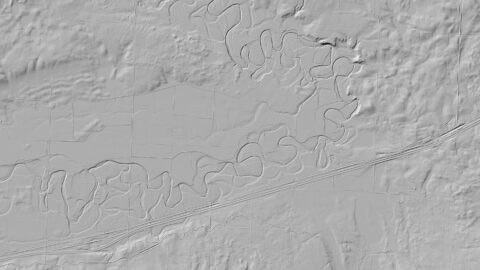
More compute leads to greater electricity consumption, and consequent carbon emissions. A 2019 study by researchers at the University of Massachusetts Amherst estimated that the electricity consumed during the training of a transformer, a type of deep learning algorithm, can emit more than 626,000 pounds (~284 metric tons) of carbon dioxide—equal to more than 41 round-trip flights between New York City and Sydney, Australia. And that’s just training the model.
We are also facing an explosion of data storage. IDC projects that 180 zettabytes of data—or, 180 billion terabytes—will be created in 2025. The collective energy required for data storage at this scale is enormous and will be challenging to address sustainably. Depending on the conditions of data storage (e.g., hardware used, energy mix of the facility), a single terabyte of stored data can produce 2 tons of CO2 emissions annually. Now multiply that by 180 billion.
This current trajectory for intensifying AI with an ever-growing environmental footprint is simply not sustainable. We need to rethink the status quo and change our strategies and behavior.
Driving sustainable improvements with AI
While there are undoubtedly serious carbon emissions implications with the increased prominence of AI, there are also enormous opportunities. Real-time data collection combined with AI can actually help businesses quickly identify areas for operational improvement to help reduce carbon emissions at a scale.
For example, AI models can identify immediate improvement opportunities for factors influencing building efficiency, including heating, ventilation, and air conditioning (HVAC). As a complex, data-rich, multi-variable system, HVAC is well-suited to automated optimization, and improvements can lead to energy savings within just a few months. While this opportunity exists in almost any building, it’s especially useful in data centers. Several years ago, Google shared how implementing AI to improve data center cooling reduced its energy consumption by up to 40%.
AI is also proving effective for implementing carbon-aware computing. Automatically shifting computing tasks, based on the availability of renewable energy sources, can lower the carbon footprint of the activity.
Likewise, AI can help diminish the ballooning data storage problem previously mentioned. To address the sustainability concerns of large-scale data storage, Gerry McGovern, in his book World Wide Waste, recognized that up to 90% of data is unused—merely stored. AI can help determine what data is valuable, necessary, and of high enough quality to warrant storage. Superfluous data can simply be discarded, saving both cost and energy.
How to design AI projects more sustainably
To responsibly implement AI initiatives, we all need to rethink a few things and take a more proactive approach to designing AI projects.





Recent Comments